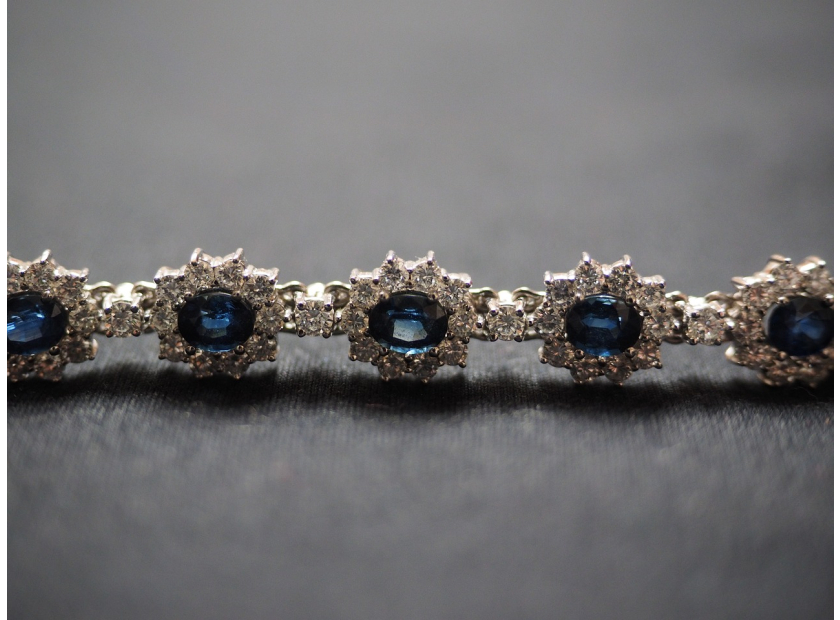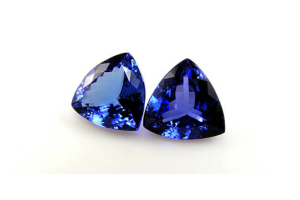USD
/
USD
/
Shipping to:
Currency:
What Is a Star Sapphire? Meaning, Formation, and Buying Guide
Star sapphires are among the most captivating gemstones, known for their unique star-like phenomenon called asterism.
This optical effect creates a shimmering star pattern on the stone's surface, enchanting gem lovers and collectors alike.
In this article, we'll explore the allure of star sapphires, how they're formed, their varieties, symbolism, and how to care for them.
Introduction to Star Sapphires
A star sapphire is a variety of the mineral corundum that displays a star-like optical effect on its surface.
This mesmerizing effect, called asterism, sets star sapphires apart from traditional faceted sapphires, making them especially desirable in fine jewelry and gemstone collections.
If you're interested in rings that feature stunning gemstones beyond diamonds, check out the gemstone engagement rings available.
The Science Behind the Star: Asterism Explained
Asterism occurs when light reflects off needle-like inclusions—typically rutile—within the stone.
These inclusions are arranged in specific patterns, and when light hits them, it forms the appearance of a star on the surface.
This effect is best seen when the stone is cut en cabochon, with a smooth, domed surface that enhances the visibility of the star.
Formation of Star Sapphires
Star sapphires form under high-pressure, high-temperature conditions where corundum crystals grow alongside rutile inclusions.
Over millions of years, these inclusions align in ways that, when properly cut, produce the signature star pattern.
Natural star sapphires are rare and highly valued for their beauty and uniqueness.
Synthetic versions are available but generally lack the depth and individuality of natural stones.
To learn more about gemstone origins, check out this guide on how gemstones and diamonds are formed.
Varieties of Star Sapphires
Star sapphires can display different types of stars, most commonly with six rays.
Some rare specimens show twelve-rayed stars due to intersecting inclusion sets.
These gems can appear in various colors such as blue, black, pink, yellow, and even color-changing varieties.
The sharpness and symmetry of the star, along with body color and clarity, greatly affect the stone's value and appeal.
Notable Sources of Star Sapphires
Star sapphires are primarily found in Sri Lanka, Myanmar, and Thailand, with Sri Lanka known for producing many of the finest specimens.
The unique geological conditions in these areas make them ideal for the formation of rutile-rich sapphires capable of displaying asterism.
Identifying Genuine Star Sapphires
Authentic star sapphires have a sharp, mobile star that appears to glide across the surface when the stone or light source is moved.
Fake or synthetic versions often show blurry or stationary stars.
Always buy from reputable sources and request certification to ensure authenticity.
For alternative gemstone choices that stand out, check out these non-traditional engagement rings.
Cutting and Setting Star Sapphires
Star sapphires must be cut en cabochon to properly display the asterism effect.
The dome should be evenly shaped and proportioned to maximize the star’s visibility.
Open-back settings are often used to allow light to pass through, enhancing the star’s appearance in rings and pendants.
Symbolism and Significance of Star Sapphires
Star sapphires have long been associated with protection, wisdom, and spiritual clarity.
They were believed to be talismans for travelers and are often considered stones of destiny and good fortune.
Caring for Star Sapphires
Clean your star sapphire with warm soapy water and a soft brush.
Avoid ultrasonic cleaners or harsh chemicals as these can damage the stone.
Store it separately to prevent scratches from harder gems like diamonds.
Famous Star Sapphires
The Star of India, weighing over 563 carats, is one of the most famous star sapphires and is housed at the American Museum of Natural History.
The Star of Adam, discovered in Sri Lanka, is the largest known blue star sapphire at over 1,400 carats.
Purchasing Considerations for Star Sapphires
When buying a star sapphire, consider the sharpness and symmetry of the star, overall clarity, body color, and size.
A vivid color with a centered, well-defined star is most desirable.
Always request a gem certificate and buy from trusted sources.
If you're exploring alternatives, you may want to compare lab-grown diamonds vs. gemstones to see what best suits your style and values.
FAQs
What causes the star effect in star sapphires?
The star effect, known as asterism, is caused by light reflecting off aligned rutile inclusions inside the stone.
Are star sapphires valuable?
Yes, they are especially valuable when the star is sharp, centered, and appears over a richly colored stone with few inclusions.
Can star sapphires be synthetically produced?
Yes, synthetic star sapphires can be made in labs and often display similar effects but are less rare and usually more affordable.
What is the best cut for a star sapphire?
The best cut is cabochon, which enhances the asterism effect and allows the star to appear clearly on the stone’s surface.
How do I care for a star sapphire?
Clean it with warm soapy water and a soft cloth or brush, and avoid exposure to harsh chemicals or ultrasonic cleaning methods.








